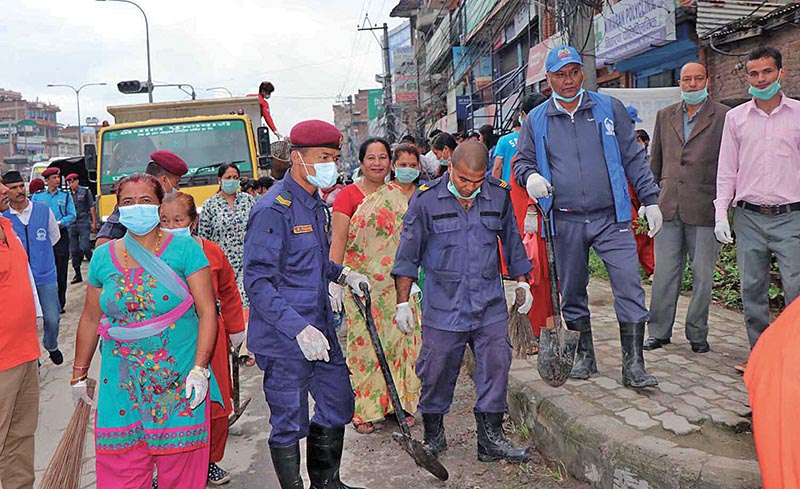273rd week of Bagmati clean-up drive marked
Kathmandu, August 4
Government officials, security personnel, volunteers and representatives from various social organisations participated in the 273rd week of the Bagmati Clean-up Campaign today, focusing on surrounding areas of Ram Mandir in Pashupati.
Addressing a gathering before clearing up the bushes grown on either side of the river and collecting garbage, Minister of Water Supply Bina Magar said, “The Bagmati Clean-up Campaign is the foundation of Nepal Clean Environment Mega Campaign recently launched by the government,” she said. The government aims to regulate the management of electrical, household, biomedical and hazardous waste under this campaign.
Admiring the enthusiasm of activists to revive the glory of the Bagmati, Minister Magar appealed to all to cooperate with the campaigners. Provincial Assembly member Narottam Baidya and Kathmandu Metropolitan City ward number 9 chair Dinesh Kumar Dangol underscored the need of broader public participation in river clean-up campaign and said they were ready to take the lead for the purpose. During today’s clean-up campaign, participants not only destroyed the wild bushes but also buried tonnes of non-biodegradable waste in pits to preserve the aesthetics and landscape of the holy river.
Nepali Army, Nepal Police, Armed Police Force, Pudasaini Friendly Society, Tilganga Women’s Group, Makalbari Tole Sudhar Samaj and Ramro Jorpati Hamro Jorpati were honoured in recognition of their contribution to the campaign. The campaign was launched on May 19, 2013. Thousands of volunteers from over 100 governmental and non-governmental organisations have been working hard to revive the past glory of the river.
According to the High Powered Committee for Integrated Development of the Bagmati Civilisation, there has been cleaner and faster currents in the river along the Gokarna-Shankhamul stretch compared to previous years. Aquatic beings can now survive in the Bagmati River above Guheshwari.
The Bagmati, comprising 57 rivers and rivulets as its tributaries, originates from Baghdwar, bifurcates Kathmandu valley and crosses the valley at Chobhar. Many shrines and cemeteries such as Gokarneshwar, Guheshwari and Pashupatinath temples, which are World Heritage sites, are located on its banks.
Increasing degradation of the Bagmati Basin has been evident in recent years due to rapid urbanisation and population growth.
Uncontrolled disposal of untreated wastewater (domestic, industrial, solid waste and agricultural runoff) in the rivers has far surpassed the assimilative capacity of the river, according to a study.






